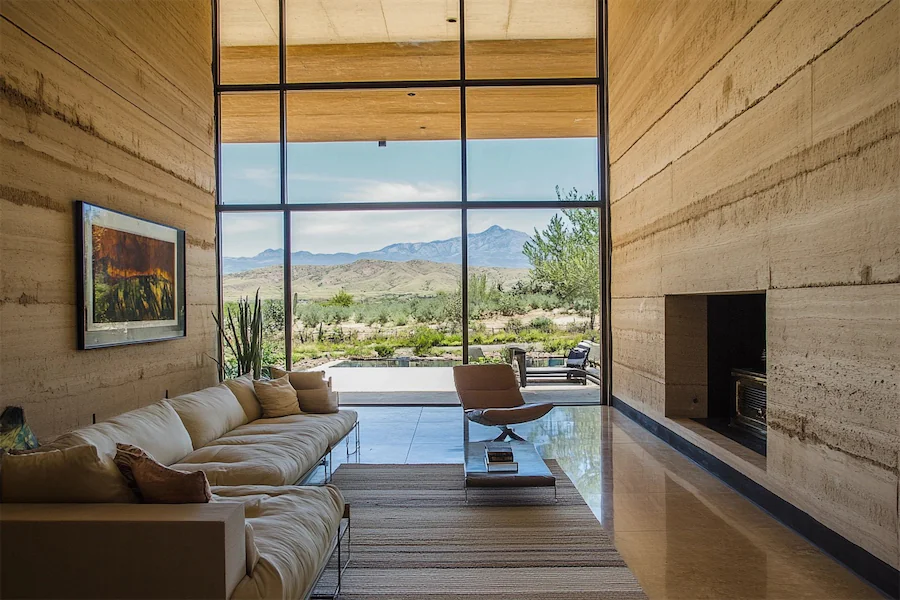Rammed earth walls are a sustainable and ancient construction technique that involves compacting a mixture of natural materials to form solid, load-bearing walls. This method has been utilized for millennia and is experiencing a resurgence due to its environmental benefits and unique aesthetic appeal.
Introduction to Rammed Earth Walls
Rammed earth construction entails compressing a blend of aggregates—such as gravel, sand, silt, and clay—into a formwork to create sturdy walls. Once the mixture dries, the formwork is removed, revealing monolithic walls with distinct textures and color variations inherent to the natural materials used.
History and Origins of Rammed Earth Walls
The origins of rammed earth construction date back thousands of years, with evidence of its use in ancient China, including sections of the Great Wall. This technique was favored for its simplicity and the availability of materials, making it a practical choice for various civilizations.
Key Features of Rammed Earth Walls
- Sustainability: Utilizing locally sourced, natural materials reduces the environmental impact associated with transportation and manufacturing, contributing to a lower carbon footprint.
- Durability: Rammed earth walls are known for their exceptional durability, with ancient structures still standing today, demonstrating their longevity.
- Thermal Mass: The density of rammed earth allows walls to absorb heat during the day and release it at night, helping to regulate indoor temperatures naturally.
- Aesthetic Appeal: The natural stratification and color variations in rammed earth walls provide a unique and visually appealing finish that blends seamlessly with the surrounding environment.
Applications of Rammed Earth Walls
- Residential Buildings: Rammed earth is commonly used in constructing eco-friendly homes that blend harmoniously with their natural surroundings.
- Commercial Structures: Businesses utilize rammed earth construction to create distinctive and sustainable environments, particularly in settings like lodges, restaurants, and retail spaces.
Considerations When Choosing Rammed Earth Walls
- Climate Suitability: Rammed earth is best suited for temperate climates; in regions with excessive rainfall, protective measures like wide eaves and proper foundation drainage are necessary to prevent erosion.
- Labor Intensity: Building with rammed earth is labor-intensive and time-consuming, often requiring skilled labor to ensure structural integrity and aesthetic quality.
- Building Codes: It’s essential to consult local building regulations, as some areas may have specific requirements or restrictions regarding rammed earth construction.
- Maintenance: Regular inspections and minor repairs, such as reapplying protective coatings, are necessary to preserve the integrity of rammed earth walls.
Conclusion
Rammed earth walls offer a sustainable and aesthetically pleasing alternative to conventional building methods. Their unique combination of environmental benefits, thermal efficiency, and design flexibility makes them an attractive choice for eco-conscious builders and homeowners seeking to create distinctive, enduring structures.
